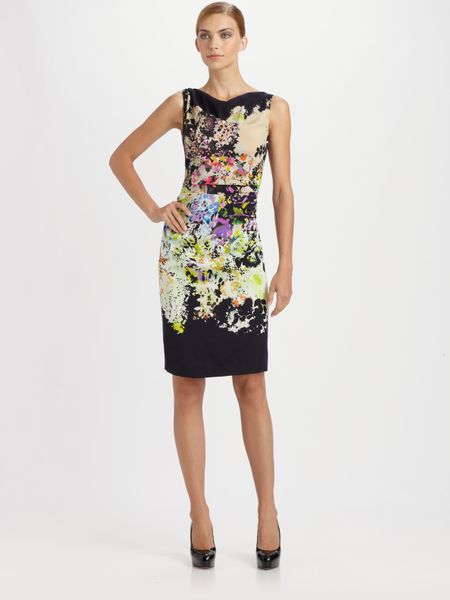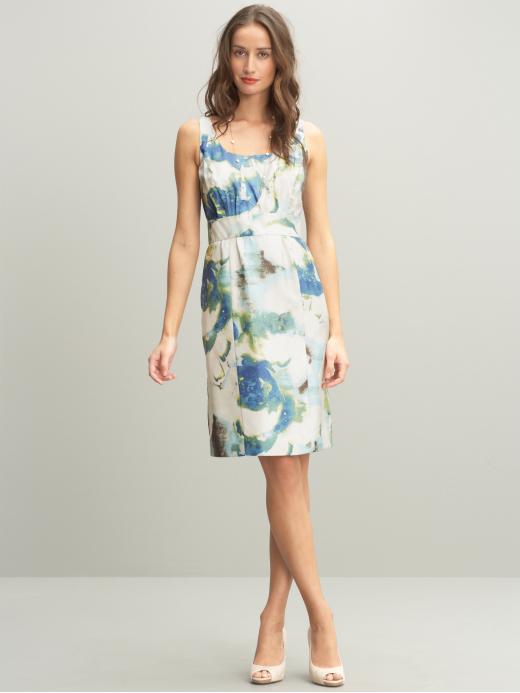Silk Floral Dress Biography
Source(google.com.pk)
Its no secret that ladies love flowers, and floral printed fabrics have been a fashionable item for hundreds of years. It makes sense wearing flowers to decorate our clothes; they are pretty, they are symbolic of femininity, and they show the beauty of the natural world.
The floral print originates from the east and Asia; throughout history, traders brought fabrics with ornate floral designs to Europe where they sold for very high prices. To have been able to wear these fabrics was a status symbol. Over time European manufacturers began to copy these fabrics to suit European tastes at a cheaper price, and the rest is history!
We first see fabrics with floral designs in the late Middle Ages; Italian merchants traded regularly with Ottoman textile manufacturers and brought sumptuous woven velvets to Europe. Eventually Italians weavers figured out how to copy these velvets, and began to produce luxurious textiles with organic motifs like pomegranates and vines. These early floral motifs, however, were quite ornate, heavy and stylized.
One of the most famous floral fabrics, chintz, has its origins in India (handmade in the country from between 1600 and 1800). Chintz, a glazed cotton cloth printed with tiny, multicolored floral motifs, was exported to Europe via Dutch and British merchants during this era. Initially, the British could not figure out how to copy the expensive chintzes, so, in 1680 the fabric was banned from import. By 1759, however, British manufacturers had solved the mystery of production, and were able to print chintzes at a low price. With the Industrial Revolution of the nineteenth century, textile production increased tenfold, and machine printed chintzes flooded the market and were used extensively in women’s day dresses. When discussing florals, we cannot forget the bold floral silks produced in Japan and China for centuries. It was during the late nineteenth century, however, that European artists began to take notice of the arts of Asia, especially the Impressionists. By depicting Chinese folding screens and Japanese kimono in their paintings, these artists started the vogue for Orientalism which would last in the Occident until the World War II. Fashion fabrics of this era, especially those created in the Art Nouveau style, featured stylized and modern floral motifs inspired by Asian examples.
So, in homage of spring, which is hopefully just around the corner, wear some colorful floral fashion and lingerie to brighten your day!
As fashion seasons come and go, floral dresses rise and fall in popularity yet have remained a constant in women's clothes since the early 20th century. Ultra feminine, they provoke an association with womanliness and softness - it's hard to feel aggressive and hard-headed in a flower print dress.
When it works, the floral look can be sexier than a young Brigitte Bardot naked in an open sports car... Yet florals can also conjure associations with 'old maids' in sensible shoes....
Much depends on attitude of course and the raw material inside the dress but anyone can wear florals..it's just a matter of discovering the right style for the right body and personality.
Florals have a rejuvenating effect, perhaps because of their strong spring/summer associations. You don't see see too many floral dresses around in winter, yet as Spring bounces around, out come the flowers, as a young maiden''s thoughts turn to...retail shopping.
Garden inspired dresses are also versatile...they can be tight fitting and sexy, loose and willowy - long, short, mid length, dressy, casual or dressy and and worn with flats, sandals, heels or boots.
Although floral prints have been around for hundreds of years, originating in the beautiful, ornate designs of the Far East and Asia; in Western culture the floral dress really only took off in a big way during the industrial revolution, when machine printed chintz could be produced en masse and in the early 20th century, off the rack floral print dresses became hugely popular.
In Rosemary Harden's hardcover book, Floral Frocks, the author explores the design history of floral prints over the last hundred years, through text and 140 luscious illustrations - "from the naturalistic to the painterly, from the graphic to the abstract".









No comments:
Post a Comment